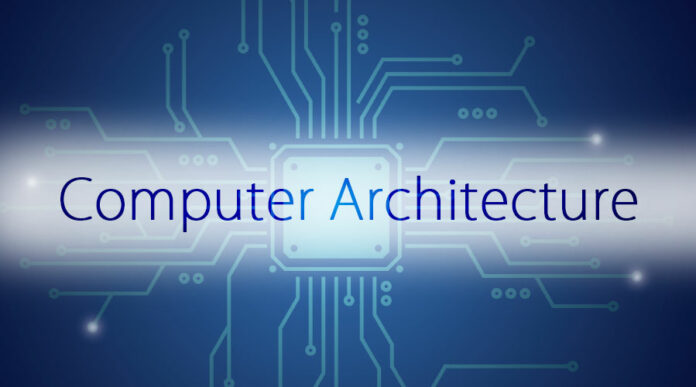In computer engineering, computer architecture is a set of rules and methods that describe the functionality, organization, and implementation of computer systems. The architecture of a system refers to its structure in terms of separately specified components of that system and their interrelationships..
Computer architectures represent the means of interconnectivity for a computer’s hardware components as well as the mode of data transfer and processing exhibited. Different computer architecture configurations have been developed to speed up the movement of data, allowing for increased data processing. The basic architecture has the CPU at the core with a main memory and input/output system on either side of the CPU (see Figure 1.7). A second computer configuration is the central input/output controller. A third computer architecture uses the main memory as the location in the computer system from which all data and instructions flow in and out. A fourth computer architecture uses a common data and control bus to interconnect all devices making up a computer system. An improvement on the single shared central bus architecture is the dual bus architecture. This architecture either separates data and control over the two buses or shares them to increase overall performance.

There are three categories of computer architecture:
- System Design: This includes all hardware components in the system, including data processors aside from the CPU, such as the graphics processing unit and direct memory access. It also includes memory controllers, data paths and miscellaneous things like multiprocessing and virtualization.
- Instruction Set Architecture (ISA): This is the embedded programming language of the central processing unit. It defines the CPU’s functions and capabilities based on what programming it can perform or process. This includes the word size, processor register types, memory addressing modes, data formats and the instruction set that programmers use.
- Microarchitecture: Otherwise known as computer organization, this type of architecture defines the data paths, data processing and storage elements, as well as how they should be implemented in the ISA.
Details about all the computer units are −
Input Unit
The input unit provides data to the computer system from the outside. So, basically it links the external environment with the computer. It takes data from the input devices, converts it into machine language and then loads it into the computer system. Keyboard, mouse etc. are the most commonly used input devices.
Output Unit
The output unit provides the results of computer process to the users i.e it links the computer with the external environment. Most of the output data is the form of audio or video. The different output devices are monitors, printers, speakers, headphones etc.
Storage Unit
Storage unit contains many computer components that are used to store data. It is traditionally divided into primary storage and secondary storage.Primary storage is also known as the main memory and is the memory directly accessible by the CPU. Secondary or external storage is not directly accessible by the CPU. Secondary storage contains a large amount of data permanently.
Arithmetic Logic Unit
All the calculations related to the computer system are performed by the arithmetic logic unit. It can perform operations like addition, subtraction, multiplication, division etc. The arithmetic logic unit and the control unit together form the central processing unit.
Control Unit
This unit controls all the other units of the computer system and so is known as its central nervous system. It transfers data throughout the computer as required including from storage unit to central processing unit and vice versa. The control unit also dictates how the memory, input output devices, arithmetic logic unit etc. should behave.
- Peakflo Internship Drive For Freshers 2024 – Apply Instantly
- Stripe Internship Drive For Freshers 2024 – Must Apply Instantly
- Infor Placement Drive For Freshers 2024 – Must Apply Instantly
- Accenture Placement Drive 2024 For Freshers – Must Apply Instantly
- DHL India Placement Drive 2024 – Software Engineer Jobs In India





